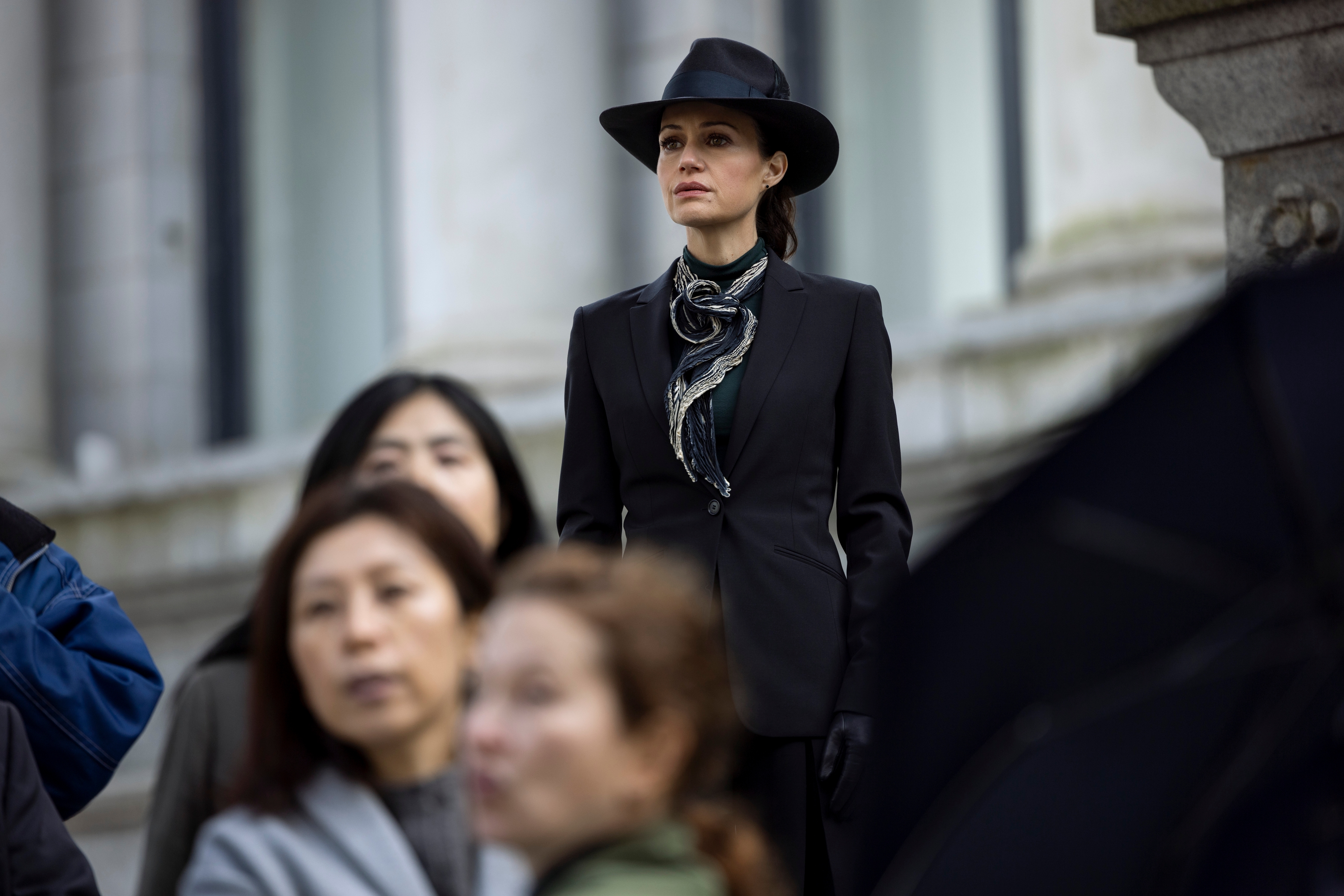The Fall of the House of Usher is one of Edgar Allen Poe’s most famous stories. And Netflix series is far from the first adaption. Of course, Roger Corman’s House of Usher occupies a place in the pop culture zeitgeist, with Vincent Prince an undeniably high point. However, this new series does something different by offering a modern spin more reminiscent of American Horror Story than the dreary, Gothic landscape thought up by Poe.
In creator, writer, and director Mike Flanagan’s version, Roderick Usher (Bruce Greenwood) isn’t just a sickly recluse in a dilapidated mansion; he’s also the corrupt owner of a pharmaceutical company. His twin sister, Madeline (Mary McDonnell), remains a similarity, but Roderick also has a host of children who begin dying in mysterious ways. While The Fall of the House of Usher is the throughline, it’s not the only Poe story spotlighted, resulting in some significant differences from the source material.
Fall of the House of Usher Changes Plot Details

Edgar Allan Poe published “The Fall of the House of Usher” in 1839. As a short story, Flanagan takes liberties to stretch it across eight episodes. Yet, the plot stays relatively intact. In Poe’s story, Roderick Usher summons his friend and unnamed narrator to his deteriorating mansion to cheer him up. The nature of Roderick’s illness isn’t specified, but his twin sister, Madeline, also suffers from it. When Madeline succumbs to her disease, the narrator helps Roderick bury his sister in the family tomb. Only after metallic banging and the expected creepy imagery does the narrator learn Roderick buried Madeline alive. She kills Roderick, and the mansion poetically crumbles around them.
Like much of Poe’s work, the details are sparse. What illness do the twins have? What were their lives like before the narrator’s arrival? Why exactly does Roderick bury Madeline alive? We don’t know. Poe never elaborates, but Flanagan does. In Netflix’s The Fall of the House of Usher, Roderick and Madeline are also twins. Much like his book counterpart, Roderick falls ill (a disease Flanagan specifies as a form of hereditary dementia). While Auggie (Carl Lumbly) certainly isn’t his friend, Roderick has similar in-depth conversations. Instead of music and romance novels, the subject matter just involves murder and the deal he and Madeline brokered with a Devil-like creature.
Roderick’s eventual attempt to kill and “honor” Madeline backfires, and she returns to murder him as their neglected childhood home collapses around them. It puts the same poetic punctuation on the Ushers while also exploring themes like madness and mortality. Greed becomes another prominent talking point. However, that piece of the pie comes from a Poe story that has nothing to do with the Ushers.
The Cask of Amontillado Gives the Usher Twins Backstory

The Fall of the House of Usher doesn’t limit itself to just its titular inspiration. Instead, the narrative tackles many of Poe’s most popular stories, from “The Black Cat” to “The Tell-Tale Heart.” When it comes to Roderick and Madeline, though, “The Cask of the Amontillado” arguably plays the most significant role.
Unlike the mostly backstory-less characters in the original, these versions of Roderick and Madeline earned their riches by taking over Fortunato, an opioid-producing company with a history as corrupt and soulless as the twins themselves. There are some messy family dynamics at play. Roderick and Madeline are the “bastards” of Fortunato’s founder. After his death, they become focused on reclaiming the company, which just so happens to involve them entombing the current head honcho behind a brick wall.
From jester masks to fancy wine, the incident closely mirrors “The Cask of the Amontillado.” Published in 1846, it’s a revenge tale at its finest. The company name, Fortunato, harkens to the story’s antagonist, who finds himself being bricked behind a wall. To be fair, “antagonist” might not be the most fitting term. It all depends on perspective. After all, the man laying the bricks is antagonistic from the right angle. Netflix’s The Fall of the House of Usher changes demand the same questions of Roderick and Madeline, motivating them to agree to Verna’s (Carla Gugino) deal in the first place.
Roderick Usher Has a Much Bigger Family

Poe declares Roderick Usher the last man in the Usher line. In the Netflix series, he ultimately becomes that, too, but only after the deaths of his children. While Poe’s Roderick had no heirs, Flanagan’s has six kids (from five different mothers) and a granddaughter.
Darker themes of sibling incest lurk in the pages of Poe’s story. Flanagan strays from the taboo implication entirely while still exploring it in his own way. Roderick and Madeline might not be sexually involved, but they are dangerously entwined. Even with its changes, The Fall of the House of Usher follows two siblings with love and ambition so consuming they are willing to broker a deadly deal at the expense of future generations.
The Fall of the House of Usher is now available on Netflix.



I hate it. TV Writers take too many liberties with great writers work. Bruce Greenwood is the only redeeming character and a great actor. Just another Netflix mess. 4/5 no I think 2/5 is being generous. I think it’s time to cancel.